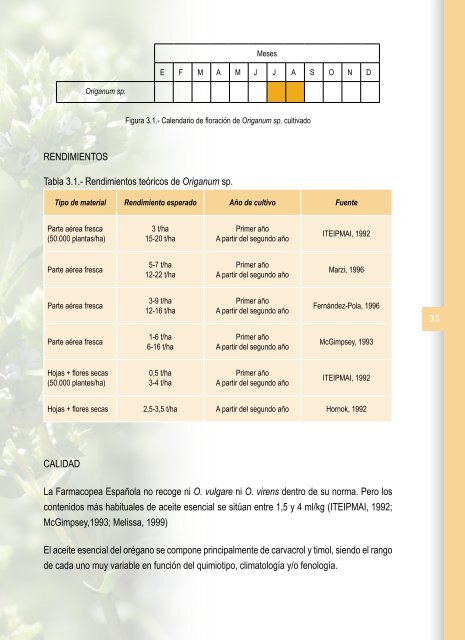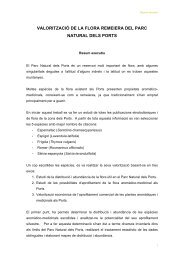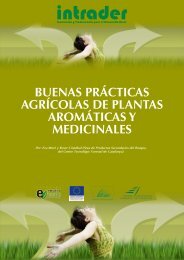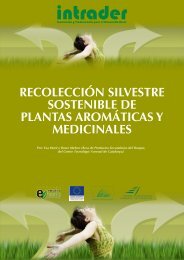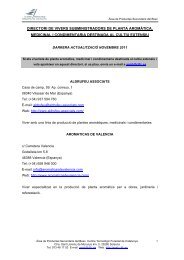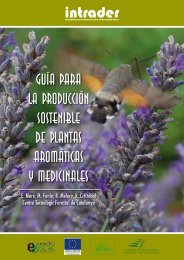cultivo de plantas aromáticas, medicinales y condimentarias ... - CTFC
cultivo de plantas aromáticas, medicinales y condimentarias ... - CTFC
cultivo de plantas aromáticas, medicinales y condimentarias ... - CTFC
You also want an ePaper? Increase the reach of your titles
YUMPU automatically turns print PDFs into web optimized ePapers that Google loves.
Meses<br />
E F M A M J J A S O N D<br />
Origanum sp.<br />
Figura 3.1.- Calendario <strong>de</strong> floración <strong>de</strong> Origanum sp. cultivado<br />
RENDIMIENTOS<br />
Tabla 3.1.- Rendimientos teóricos <strong>de</strong> Origanum sp.<br />
Tipo <strong>de</strong> material Rendimiento esperado Año <strong>de</strong> <strong>cultivo</strong> Fuente<br />
Parte aérea fresca<br />
(50.000 <strong>plantas</strong>/ha)<br />
3 t/ha<br />
15-20 t/ha<br />
Primer año<br />
A partir <strong>de</strong>l segundo año<br />
ITEIPMAI, 1992<br />
Parte aérea fresca<br />
5-7 t/ha<br />
12-22 t/ha<br />
Primer año<br />
A partir <strong>de</strong>l segundo año<br />
Marzi, 1996<br />
Parte aérea fresca<br />
3-9 t/ha<br />
12-16 t/ha<br />
Primer año<br />
A partir <strong>de</strong>l segundo año<br />
Fernán<strong>de</strong>z-Pola, 1996<br />
35<br />
Parte aérea fresca<br />
1-6 t/ha<br />
6-16 t/ha<br />
Primer año<br />
A partir <strong>de</strong>l segundo año<br />
McGimpsey, 1993<br />
Hojas + flores secas<br />
(50.000 plantes/ha)<br />
0,5 t/ha<br />
3-4 t/ha<br />
Primer año<br />
A partir <strong>de</strong>l segundo año<br />
ITEIPMAI, 1992<br />
Hojas + flores secas 2,5-3,5 t/ha A partir <strong>de</strong>l segundo año Hornok, 1992<br />
CALIDAD<br />
La Farmacopea Española no recoge ni O. vulgare ni O. virens <strong>de</strong>ntro <strong>de</strong> su norma. Pero los<br />
contenidos más habituales <strong>de</strong> aceite esencial se sitúan entre 1,5 y 4 ml/kg (ITEIPMAI, 1992;<br />
McGimpsey,1993; Melissa, 1999)<br />
El aceite esencial <strong>de</strong>l orégano se compone principalmente <strong>de</strong> carvacrol y timol, siendo el rango<br />
<strong>de</strong> cada uno muy variable en función <strong>de</strong>l quimiotipo, climatología y/o fenología.


